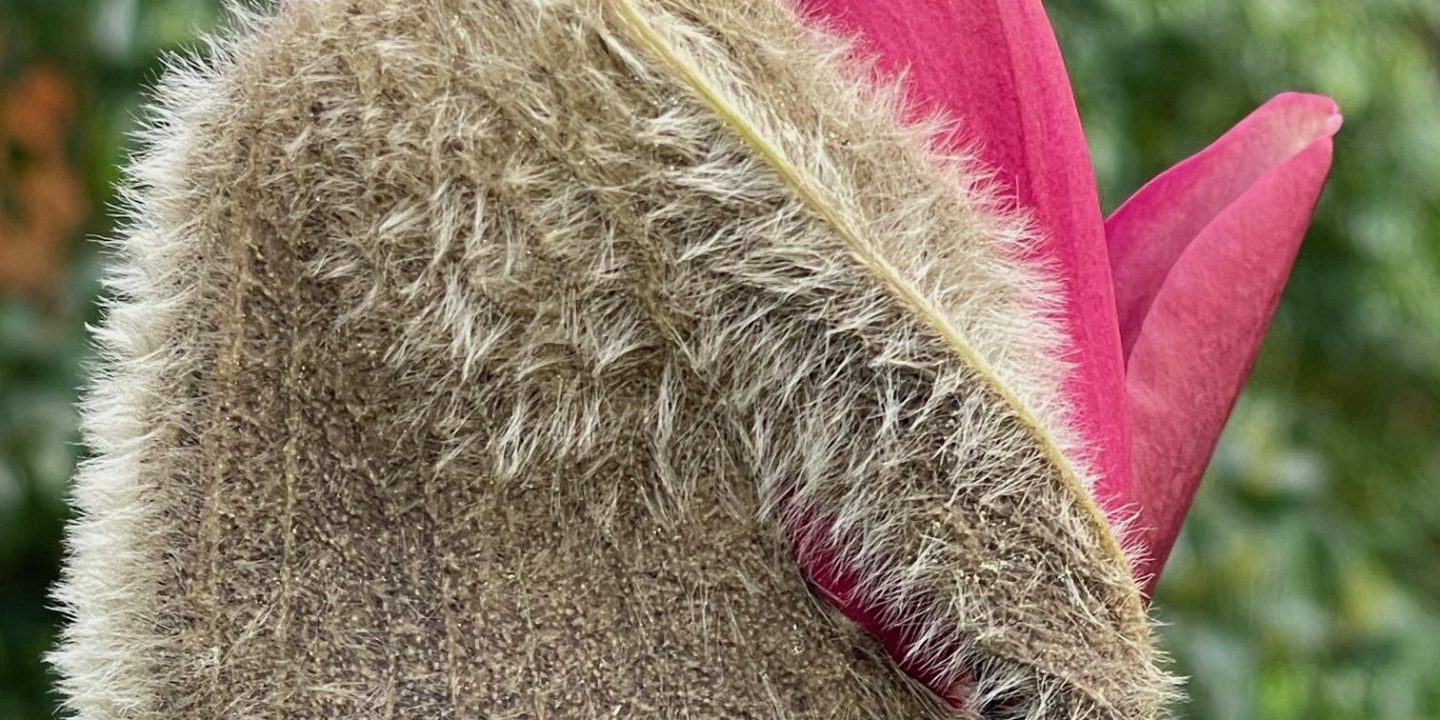“Gardens are not made by sitting in the shade”
Rudyard Kipling
Like many of us, our gardening expert Alison Agnew, has been struggling to find the will to face the weather and get out in the garden. Thankfully she has some advice on how to chase away the winter blues. And explains why getting out into the garden in the wind and rain might actually be good for us!
This winter has been so miserable, so wet, so grey and so gloomy politically as well that, it’s been difficult to find the energy or the will to prepare for spring. Maybe that’s why the snowdrops were setting seed before I really noticed them and only the waves of February Gold daffodils could begin to stir me out of my winter torpor.
Suddenly the Magnolias are popping open their furry buds and I’m in full panic mode. I’m late with everything that has to be done before the great whoosh of growth overtakes us and I’m behaving like a headless chicken rushing from one job to another without completing any of them.
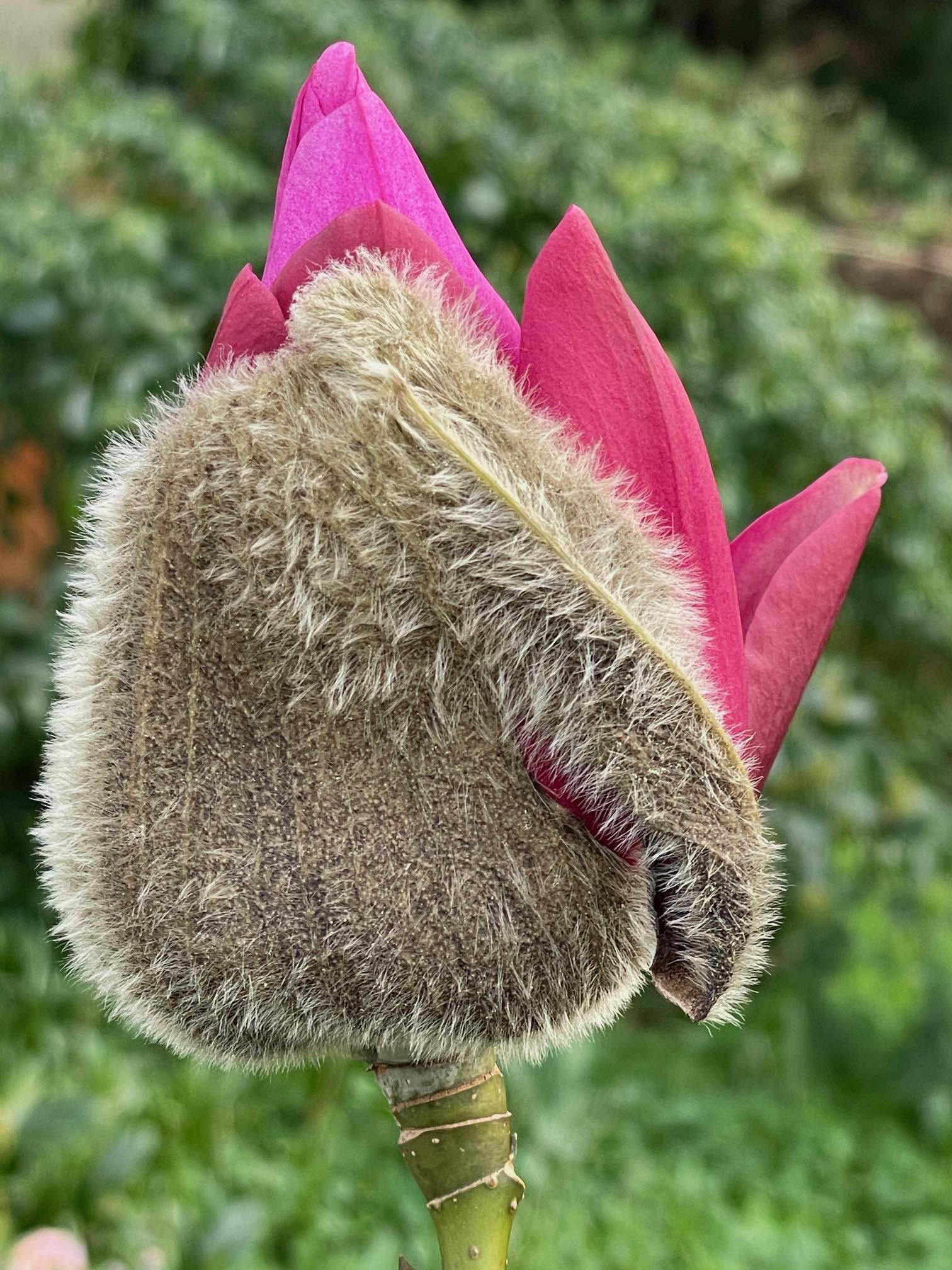
Magnolia bud
In the kitchen garden, the only thing growing is the height of the compost heaps. We are piling them high now with stuff that should have been cut back earlier.
The poly tunnel needs to be cleared out and scrubbed down – a job I should have done on one of those rainy days but didn’t.
The greenhouses also need a good clear out to get rid of algal growth, dead leaves and failed cuttings – why didn’t I do that last month?? I did manage to clean my propagation bench just in time to induct my grandchildren into the joys of seed sowing. Sadly they were not here long enough to see the shoots pop up but I can present them with their own sown pots of sweet peas and Cosmos at Easter.
The raised vegetable beds are thankfully clean because wrapped in black weed mat last Autumn and the chickens have kept the fruit cage clean since we housed them there this winter. There isn’t a leaf left on my strawberries though – so I have little hope of a crop. And – the asparagus bed needs to be cleaned and mulched before it starts to grow, though I am still enjoying the sight of bright orange berries on the faded stems.
In the flower garden things are really overwhelming.
Some gardening jobs are getting done
We have given up trying to clear most of the quaking grass that self seeds on the Woodland Bank – it has just got too tall and it’s difficult to remove without damaging the emerging bulbs. So this year the bluebells and the daffodils, the Erythroniums and the Arums will just have to try harder to compete.
The many Pittisporums should have been cut back at the end of last summer but got missed and the rose pruning is a race against time because they are all shooting after the last two warm weeks. The new battery powered hedge trimmer is doing a great job on the hydrangeas but, despite claiming in my last article that you can prune shrub roses this way, I am pruning them slowly with secateurs because some old habits die hard. Several of the Wisteria were not pruned so I’m doing this randomly – whenever I see a long growth protruding. I have managed to savage the passion flower, pulling it down from the house gutters and viciously reducing it to a scramble of 2m stems. That was a good day.
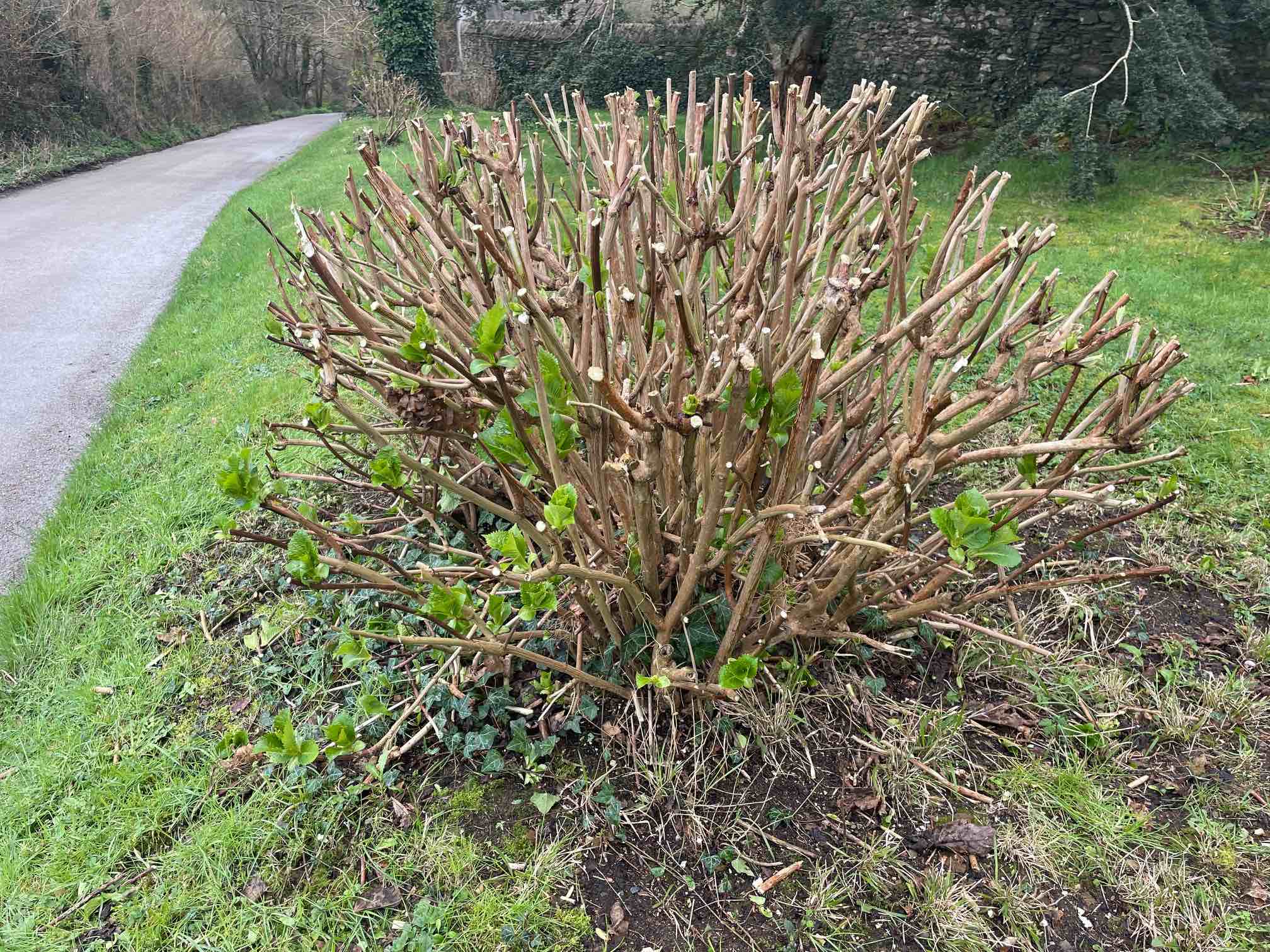
We have cut back the Pond Border and the Hot Garden and given them a first clean but we haven’t done the same for any of the other borders -aaaagh! We haven’t even started the spring mulching because we haven’t weeded enough. Why is it that most garden plants hibernate while the shiny geranium – our most prolific weed – just loves to grow all winter?
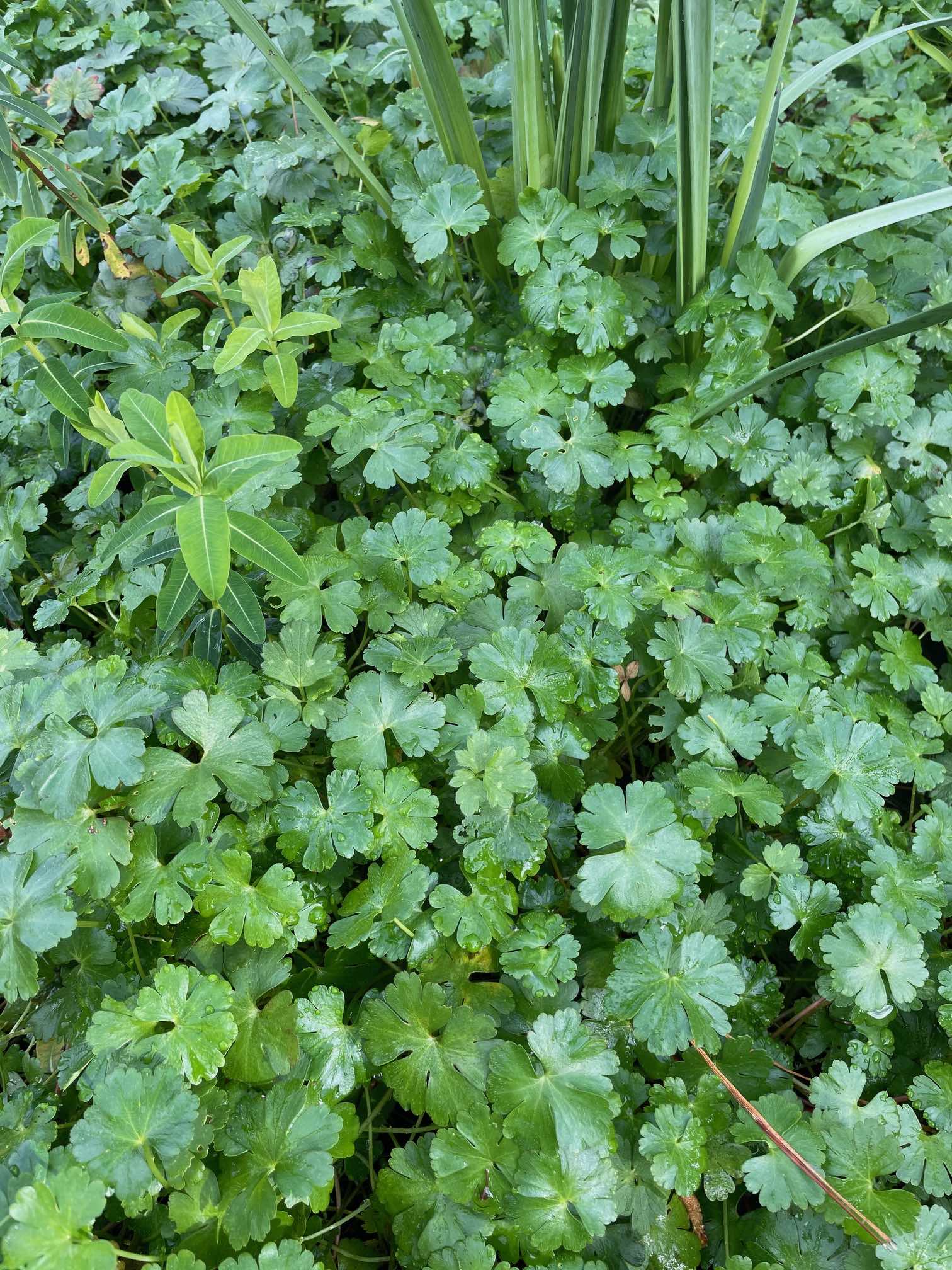
Meanwhile, the wet winter has turned our lawns into Japanese moss gardens! I have thought of hiring a de-thatching machine to take out the moss and promote grass growth – but where is the time to do it ? And do we have enough compost space to get rid of the resulting moss? And we ought to aerate the big lawns as well and then we ought to top dress them with some good soil and then feed them.
Then – of course we should be starting to feed the whole garden as it starts to grow. I do have my stocks of Blood Fish and Bone ready and waiting but they won’t spread themselves will they?
So my winter blues have given way to night time lists of jobs not done and daytime panic attacks that they’ll never get done!
Gardening is supposed to be good for us, mentally as well as physically!
The physical advantages are pretty self evident. The constant demands of a garden drive us outside into the light to make our own Vitamin D – even in winter, and exposure to sunlight can also lower blood pressure.
The constant movements required for weeding, loading barrows, emptying barrows, walking back to the shed for a forgotten tool etc etc has to be as good exercise as any gym workout. Now that I am oldish, I do try to do one type of work for no more than an hour or two so that I use different muscles through the day to avoid straining any one bit of me. So, a bit of headless chickening is not a bad thing.
Load-bearing work – moving soil or stones around – is really good for maintaining bone density – particularly important for post-menopausal women. Even if you are young and fit be careful to protect your back – don’t overload the barrow and pull heavy barrows behind you rather than push them – pulling uses a better balance of abdominal and back muscles. What’s more, according to a New Scientist article I’ve just found – pulling also reverses the force vector from pushing downwards on the wheel to an upward force that offsets some of the load. I’ve always said it’s easier – and now I’m vindicated!
Gardening doesn’t provide much opportunity for cardio exercise unless you have a very steep garden, indulge in furious digging or are one of those virtuous people that actually turn over their compost. The only thing that raises my heart rate in the garden is the sight of box blight, slug damage and rabbit munching.
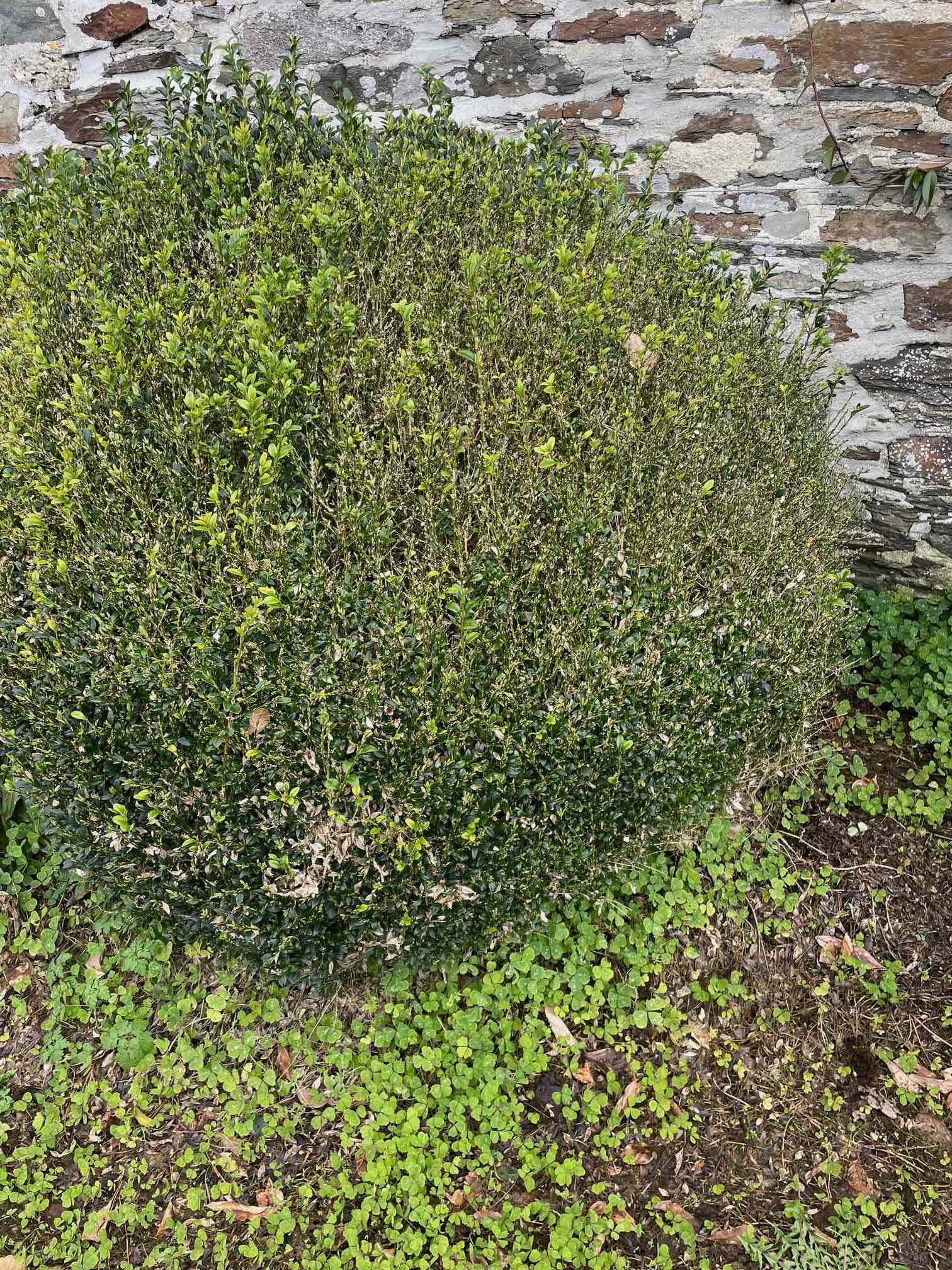
The evidence for mental health advantages maybe less obvious but are becoming very well established.
The link between physical exercise and mental well being generally is well accepted and physiological explanations for these effects are becoming better understood.
The link between gardening specifically as an aid to better mental health is quite complex. Of course the physical exercise is a major component but other factors could be contributing.
Everyone should be listening to Michael Mosley’s ‘Just One Thing’ on Radio 4 and Sounds – he applies the science of our physiology to practical life-enhancing action. He expounds on the benefits of cold exposure in boosting our immune systems and mood – and you don’t have to go cold swimming to gain the benefits – just get cold frequently. Prolonged dark, grey and rainy weather is clearly bad for our mental health – it is universally accepted. However, being out in the rain could well be good for us. Rainfall releases Geosmin from the soil – an aromatic compound linked to relaxation and increased levels of the ‘ happiness’ chemical serotonin.
Just being out in green spaces has been shown to reduce stress and improve mood – so we shouldn’t sneer at urbanites that go ‘forest bathing’ at weekends – just be grateful that our exposure to green is part of our regular lives on the Roseland. Apparently changes in brain chemicals occur even with exposure to images of green nature.
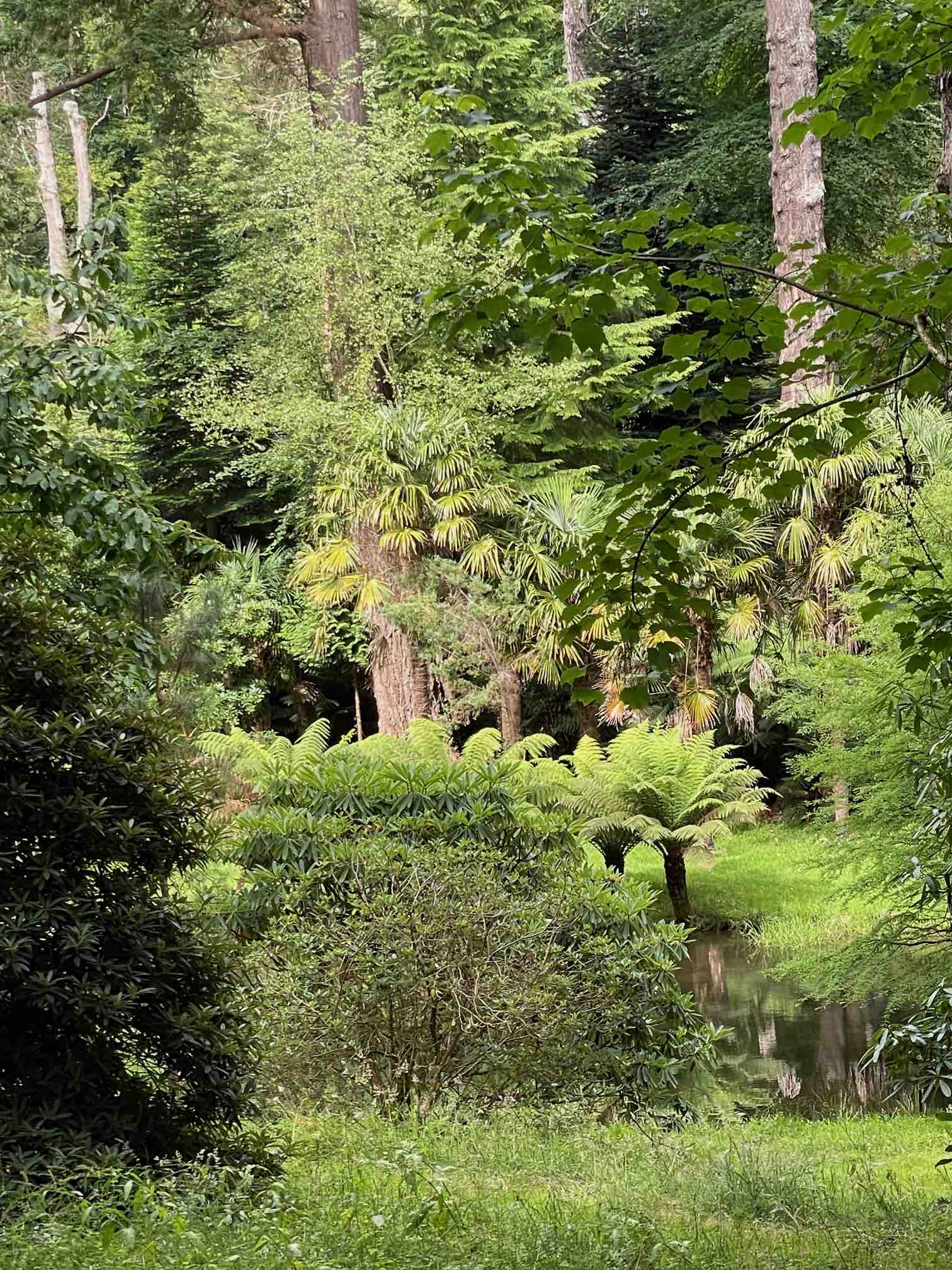
Gardening brings an additional element to just being outside.
The need to concentrate on a task like not pulling out the plants you want when weeding or considering which bud to prune down to etc This is the distraction hypothesis – focusing on life outside oneself helps to distract from harmful internal thoughts.
Finally, I’ve always believed that humans have an elemental affinity with soil. It is so lovely to feel and your fingers and your nose together can rapidly evaluate its potential. Now that I make pots as well as garden, I find the feel of clay in the hand has the same sensual feedback that brings me joy. And now there is evidence that microorganisms in the soil can directly affect your mood. To put it very simply, ingested Mycobacterium vaccae and likely other soil bacteria can induce brain cells to produce serotonin as well as having a range of beneficial immunomodulatory effects.
So get your hands dirty and don’t bother to wash them before you eat your lunchtime sandwich! It seems not only will we ‘eat a peck of dirt before we die’ but that we should eat a peck of dirt to live a healthy and happy life.
Here are some open access review articles that provide more detail.
Role of Physical Activity on Mental Health and Well Being: A Review.
Mahindru et al. Cureus 2023 Jn;15(1).
Gardening for health: a regular dose of gardening.
Richard Thompson. Clinical Medicine 2018 Jun:18(3). 201-205.

